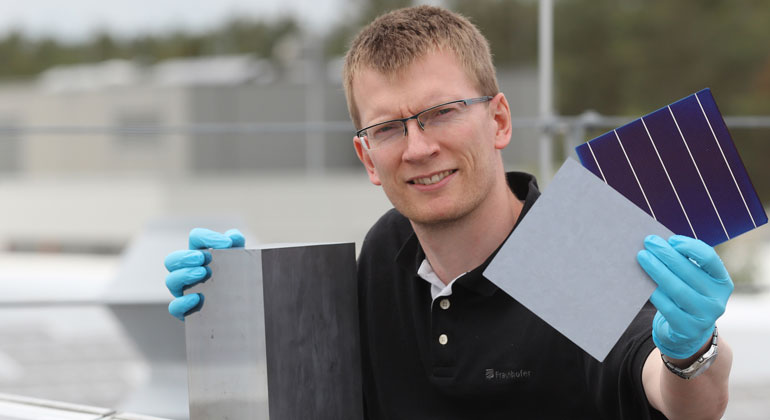German scientists study causes of LeTID
Researchers at Germany’s Fraunhofer Institute for Integrated Systems and Device Technology IISB are trying to understand the causes of light and elevated temperature induced degradation (LeTID) in PERC solar cells. Initial investigations should provide a comprehensive understanding of the process and material dependency of LeTID and related degradation effects in monocrystalline and multicrystalline PERC solar cells.
The development of passivated emitter and rear contact (PERC) solar cell technology has enabled manufacturers to improve the efficiency of crystalline silicon cells to over 22% for monocrystalline products and about 20% for multicrystalline devices. Researchers at Germany’s Fraunhofer Institute for Integrated Systems and Device Technology IISB are now coordinating Zero Degradation, a joint project studying mono- and multicrystalline PERC solar cells, to bring efficiency losses in PERC solar cells to zero.
The efficiency of PERC solar cells can drop by several percentage points during operation. The scientists want to focus on one of the main causes of efficiency loss – light and elevated temperature induced degradation (LeTID). According to the Fraunhofer IISB researchers, the mechanisms and cause of LeTID are still not sufficiently understood.
Under the framework of the project, basic investigations should initially provide a comprehensive understanding of the process and material dependency of LeTID and related degradation effects in monocrystalline and multicrystalline PERC solar cells. The researchers want to find the cause in manufactured monocrystalline and multicrystalline wafer materials, and in the individual steps of solar cell production. The partial results will then be combined in order to achieve a zero degradation concept for the industrial production technology of multi- and monocrystalline PERC solar modules.
The researchers are also focusing on the interaction of impurity elements in the wafer base material with the hydrogen. These impurities are introduced during the production of the solar cell in the surface passivation step.
In addition to Fraunhofer IISB, the Zorro project consortium includes the International Solar Energy Research Center Konstanz e.V. (ISC), the University of Konstanz (UKN), and the Institute for Applied Physics (IAP) of the Technical University Bergakademie Freiberg (Saxony). The associated industry partners are Wacker Chemie and Centrotherm International.
Source
The report was written by the editorial office “pv-magazine” (Petra Hannen) 2020 – the article may not be redistributed without permission!








